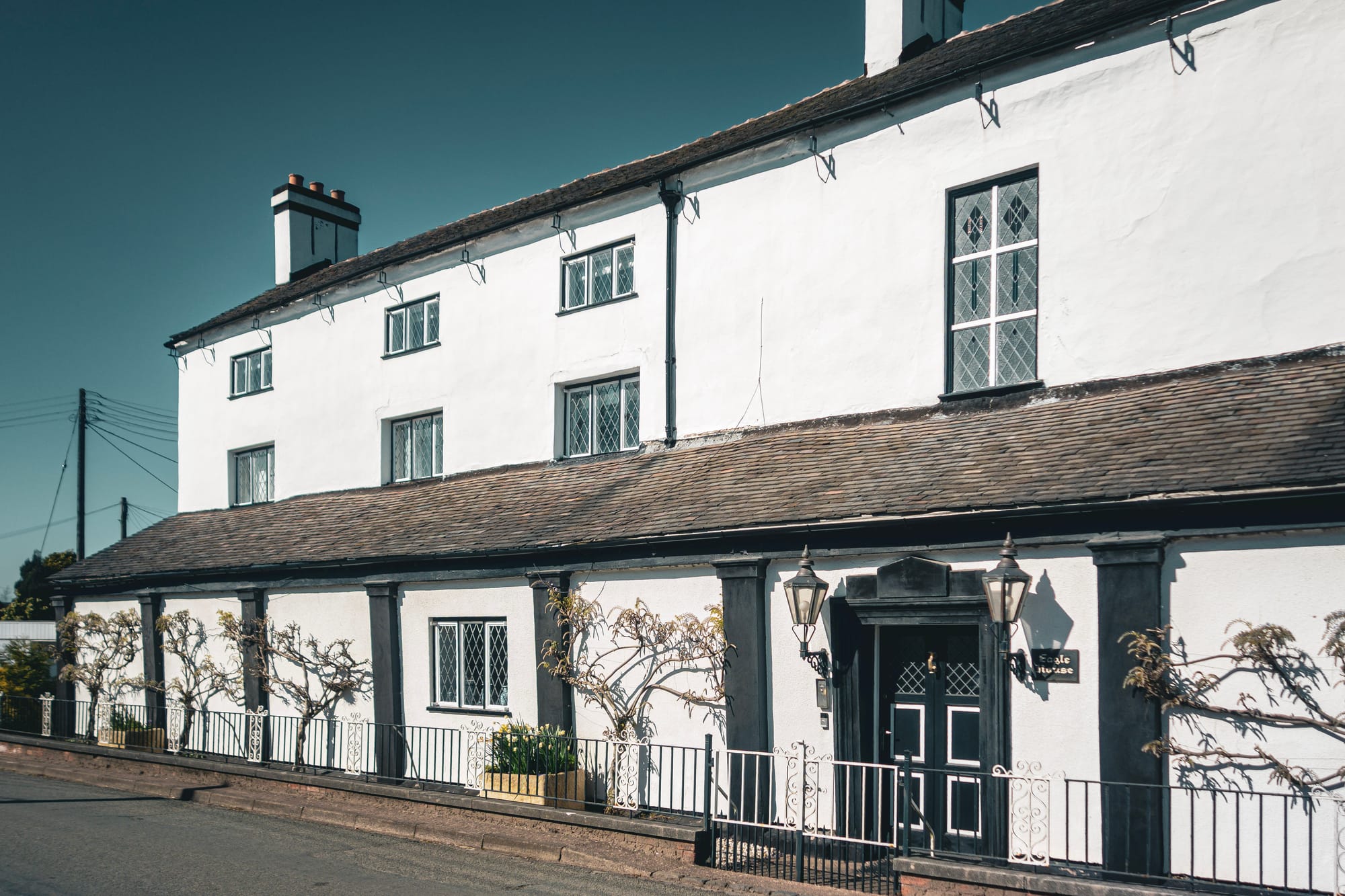Watch my video on Eagle House here on YouTube
Early 19th Century Origins as the Eccleshall Workhouse
Eagle House in Eccleshall, Staffordshire, began its life not as a genteel residence but as the town’s parish workhouse. It was constructed in 1810 to replace a smaller, dilapidated workhouse on Castle Street. The local vicar had condemned the old facility as “a disgrace to any civilised country,” prompting a push for a new poorhouse. The Bishop of Lichfield (James Cornwallis, 4th Earl Cornwallis), lord of the manor at nearby Eccleshall Castle, granted permission to build on his land. Builders even recycled bricks and timbers from Eccleshall’s crumbling old town hall to erect the new workhouse, ensuring the imposing three-storey Georgian building rose efficiently on the outskirts of town.
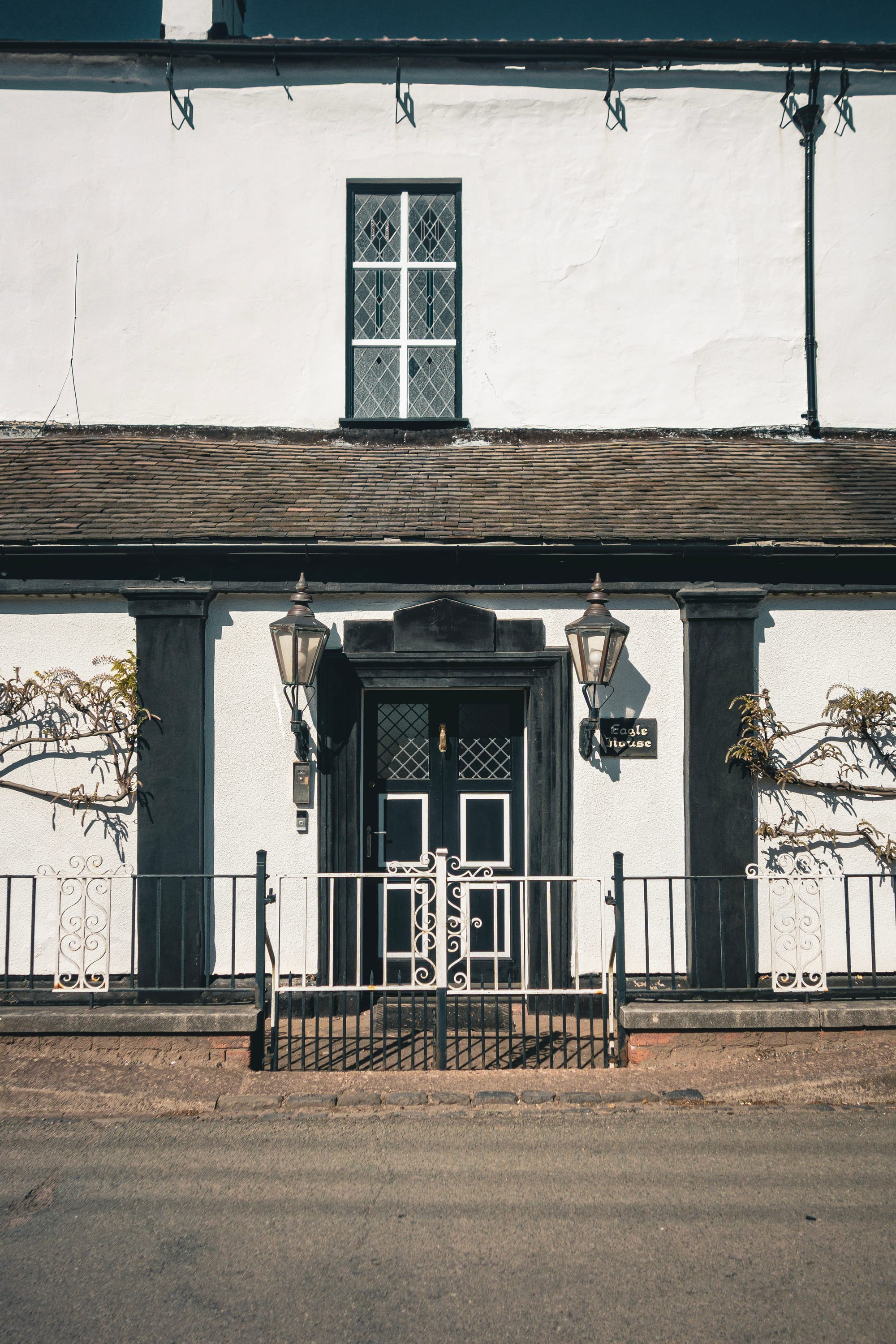
By 1817, the first destitute residents moved into the new Eccleshall Poor House. For just over two decades, Eagle House (as it would later be known) operated as a refuge of last resort for the area’s most vulnerable. It sheltered “illegitimate children, abandoned wives and the old and infirm,” offering them basic lodging and manual work where possible. Tucked away at Cross Butts, a short distance from the bustling High Street, the workhouse was intentionally placed “out of sight” of polite society. Yet it soon became an indispensable institution in early 19th-century Eccleshall, especially during lean years when poverty was rife.
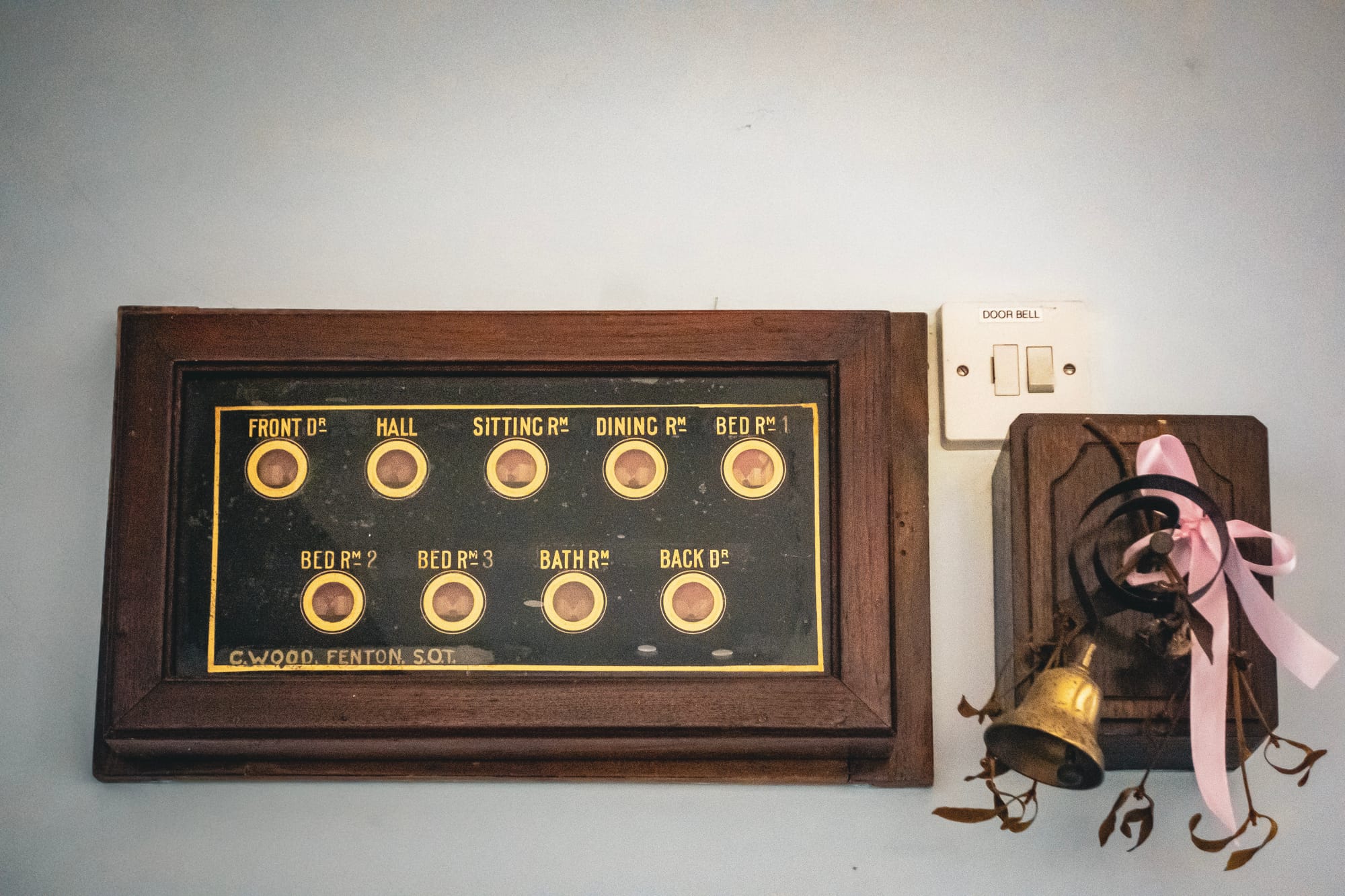
Life and Stories Within the Workhouse Walls
Life in the workhouse was austere and closely regulated. Inmates, called paupers at the time, earned their keep through menial labour (such as cleaning or mending) and lived under the watch of a workhouse governor. Historical records recently unearthed by Helen and Andy, the current owners, have shed light on some personal stories of those who lived behind Eagle House’s thick walls. For example, Sarah Emery was admitted as an infant in 1838 after being abandoned by her parents. Just one year old, Sarah was left with her grandmother, who “couldn’t cope with another mouth to feed,” and so the baby girl was brought into the workhouse for care. Decades later, her name now graces one of the B&B’s guest rooms in tribute, a poignant reminder of her humble start in life.
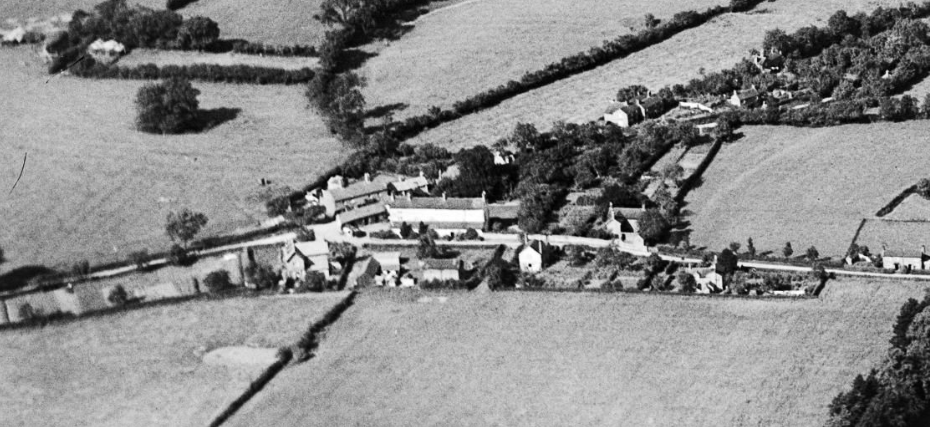
Another entry from the workhouse records speaks of Ann Groom, a young mother who arrived with her three children. Ann’s husband was described as “an incorrigible rogue, believed to be in the neighbourhood of Tamworth,” who had deserted the family. With no means of support, Ann and her little ones sought shelter under the poorhouse’s roof. Stories like Sarah’s and Ann’s illustrate the human drama that played out here, from infants born into misfortune to women left destitute by absent spouses. By 1839, the workhouse housed 97 paupers in total, plus the governor’s own family, who managed the establishment. It is hard to imagine the crowded dormitories and meagre rations that once filled the same rooms now dressed in comfort for guests.
The Eccleshall workhouse era came to an end in 1839 following nationwide Poor Law reforms. The New Poor Law of 1834 reorganised relief to larger regional unions, and Eccleshall’s paupers were relocated to the Stone Union Workhouse about 7 miles away. After just a couple of decades of service, the locally run poorhouse closed its doors. The stout brick building at Cross Butts, once a site of despair for so many, was now left oddly quiet, but its story was far from over.

Portrait of Dr Christopher Greatrex, Eccleshall,Dr Greatrex arrived in Eccleshall from Birmingham in 1818 at the age of 26. He lived in Stone Road.He became Eccleshall's principal doctor for over sixty years and died in 1880.View Full Resource on Staffordshire Past Track
A New Lease of Life: The Doctor’s Residence (1840s)
Not long after the workhouse closed, Eagle House transitioned into a doctor’s residence and surgery. Eccleshall’s parish surgeon, Dr Christopher Greatrex, purchased the property in the early 1840s. The 1841 Census captures a snapshot of his household there: Dr Greatrex living at Eagle House with his wife, Catharine and five of their seven children. No longer a refuge for the poor, the big house now bustled with the life of a Victorian family, children’s voices in the halls and patients coming to see the doctor in what had been the ward rooms.
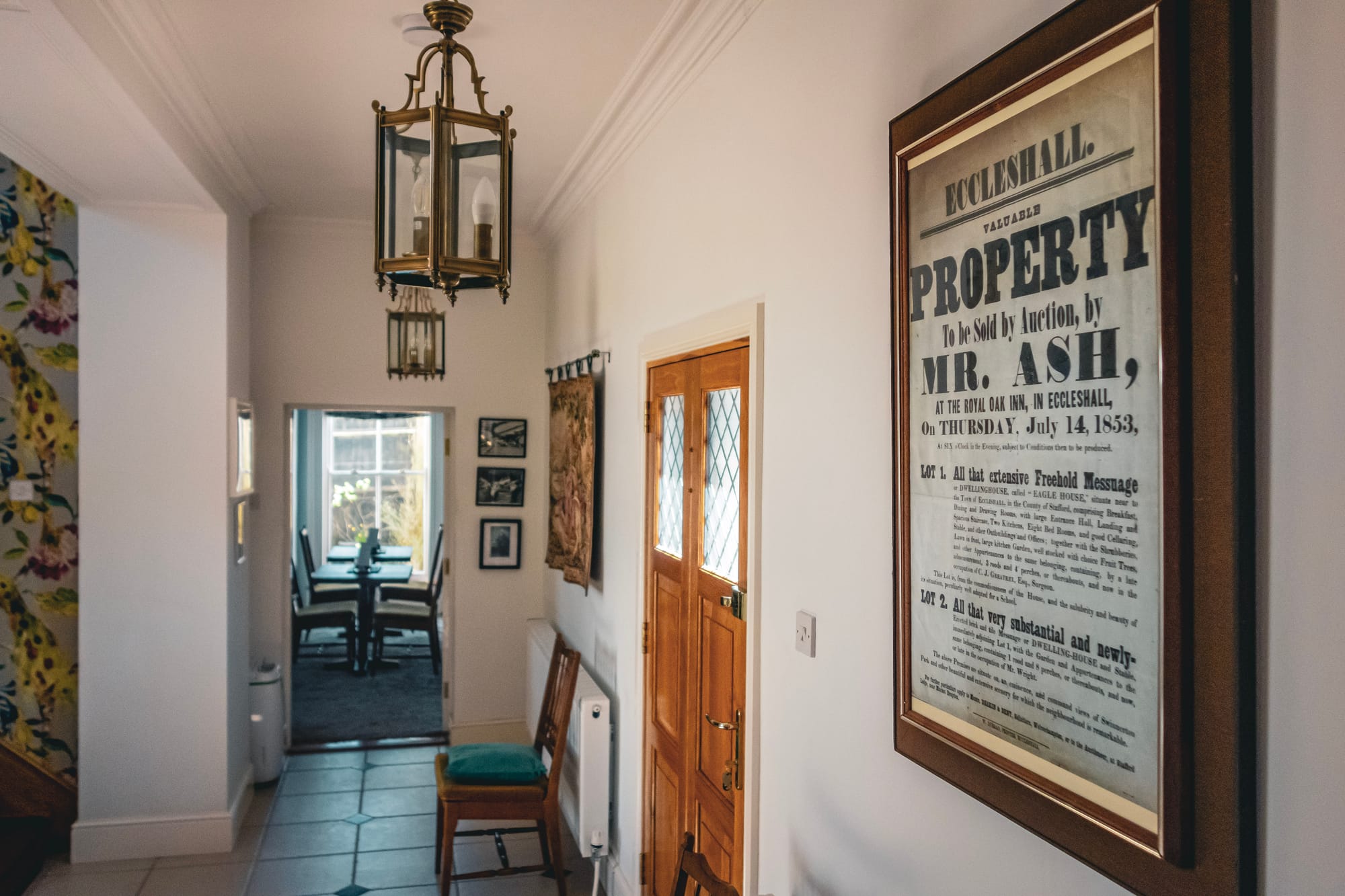
Dr Greatrex’s tenure at Eagle House left its mark on local history. He practised medicine in the town and raised a prominent family. One of his sons, Frederick Greatrex, actually spent his youth at Eagle House (circa 1840–1855) and later went on to become the Mayor of Stafford twice, in 1884 and 1896. It’s intriguing to think that a boy who grew up in a former workhouse would rise to such civic status. By 1853, Dr Greatrex decided to move on and put Eagle House up for sale at auction. This sale would usher in yet another completely new chapter for the building.

The Young Ladies’ Boarding School (1853–1890s)
Following the 1853 sale, Eagle House found an educational purpose: it became a boarding school for young ladies. The school was established and run by Miss Sarah Tunnicliff, who served as Headmistress. Miss Tunnicliff, reportedly aided by her four daughters, turned the former workhouse into a place of learning and refinement for girls. For nearly four decades throughout the late Victorian era, local records and newspaper notices show Eagle House operating as “Miss Tunnicliff’s Boarding School for Young Ladies,” a private academy that likely taught music, needlework, literature and other accomplishments of the day. The school prospered and continued until at least 1894, making it a fixture of Eccleshall society in the second half of the 19th century.
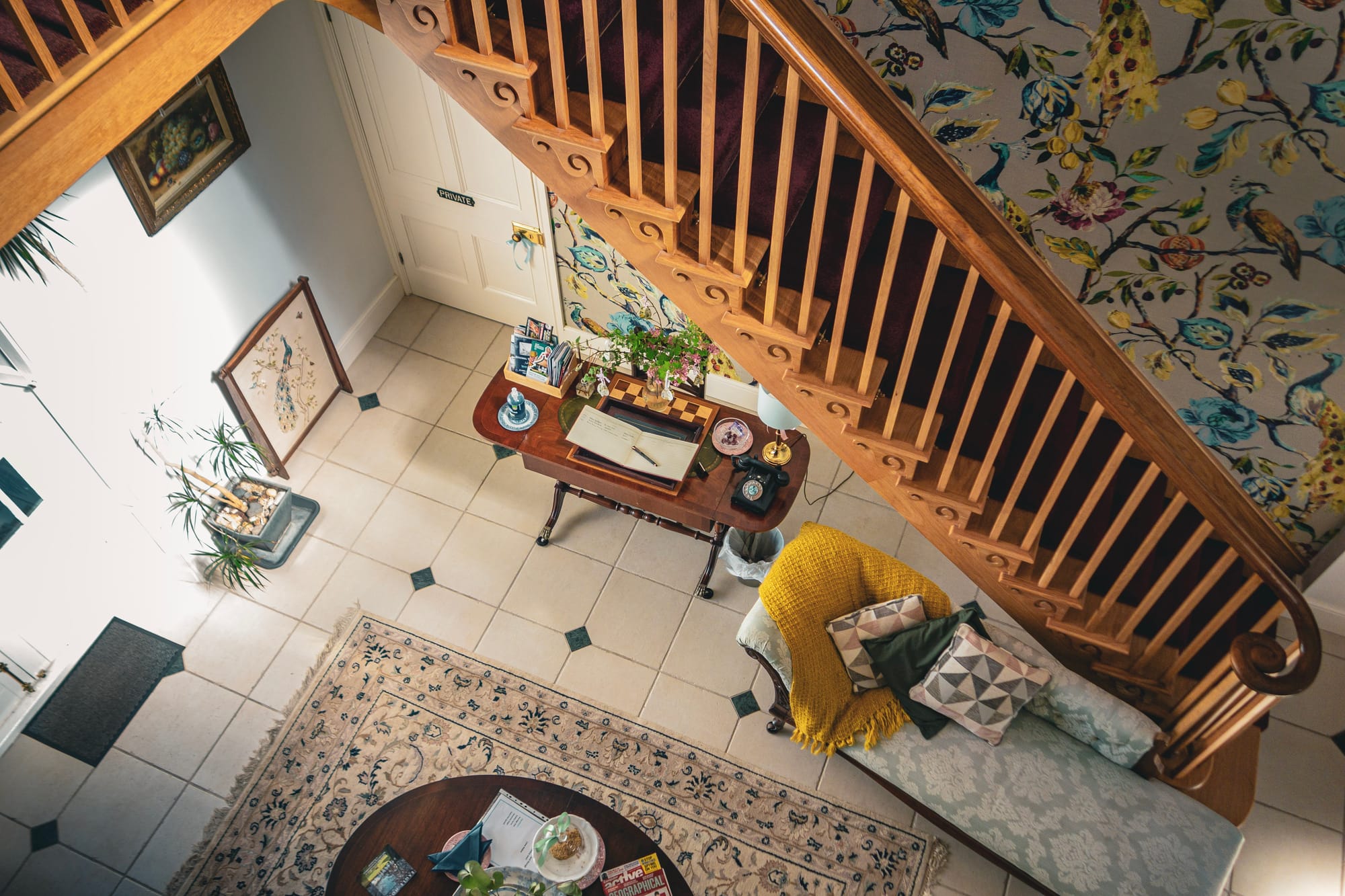
It’s a striking contrast: the same building that once housed the destitute poor was now hosting the daughters of well-to-do families, providing them with education and lodging. Eccleshall’s location on the London-to-Chester coaching route made it a convenient spot for such an academy, and Eagle House was one of several private establishments in town during that period. The large gardens and spacious rooms that had been meant to accommodate dozens of paupers now provided an elegant setting for classroom instruction and dormitories. By the end of the 19th century, as Miss Tunnicliff grew older (and educational norms changed), the girls’ school closed its doors. Eagle House had once again fulfilled a role and was ready to adapt to yet another identity as times changed.
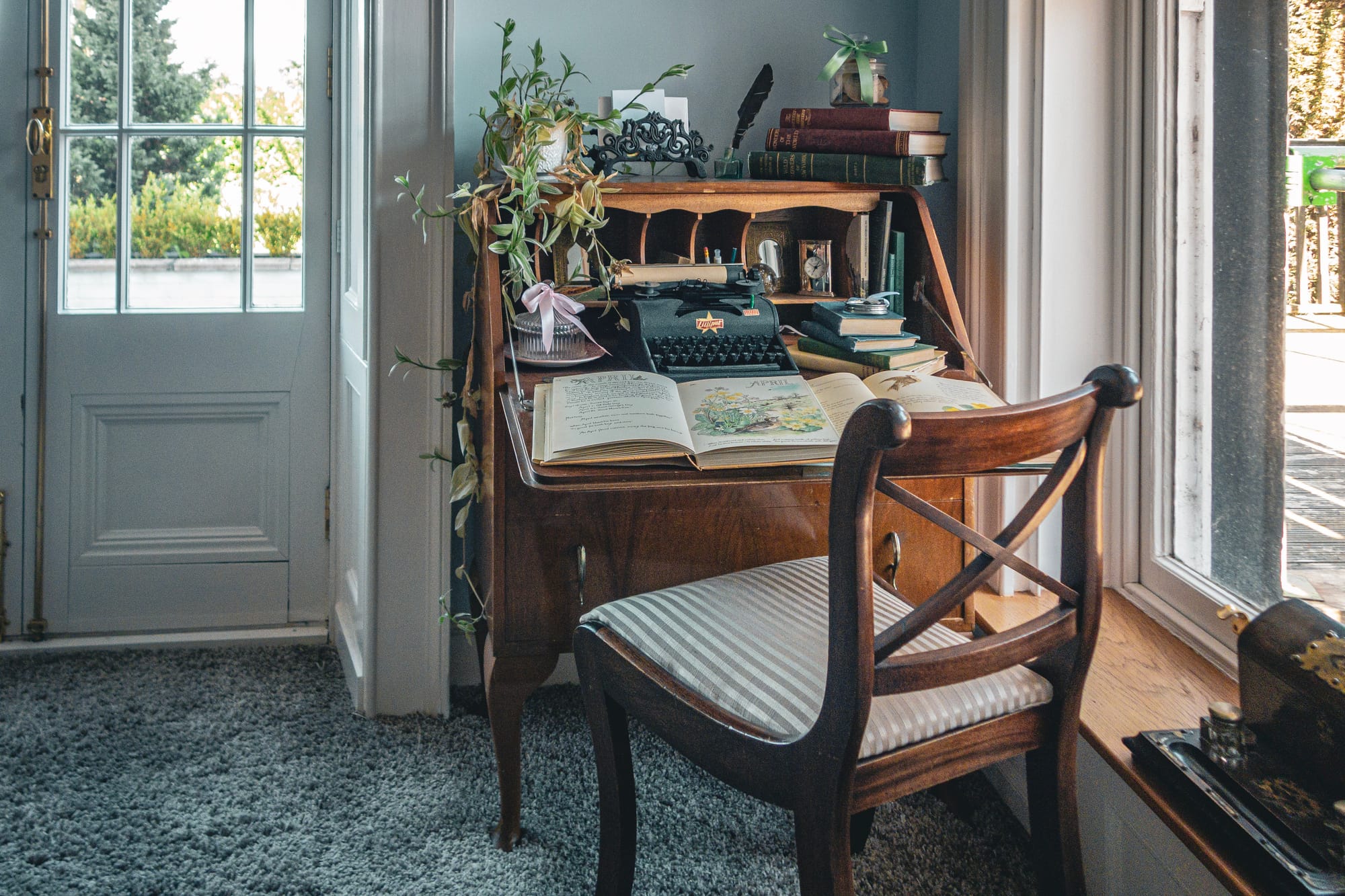
20th Century Transitions and Preservation
With the school era over, Eagle House settled into use as a private residence in the 20th century. The grand building became a family home over the ensuing decades, passing through different owners. Its historic character was recognised with an official Grade II listing in 1980, protecting the structure for its architectural and heritage value. The listing noted Eagle House’s striking stuccoed Georgian façade and the survival of many original features (such as its sash windows and wooden shutters) as reasons for its special significance. This ensured that any future changes would respect the integrity of the early 19th-century design.
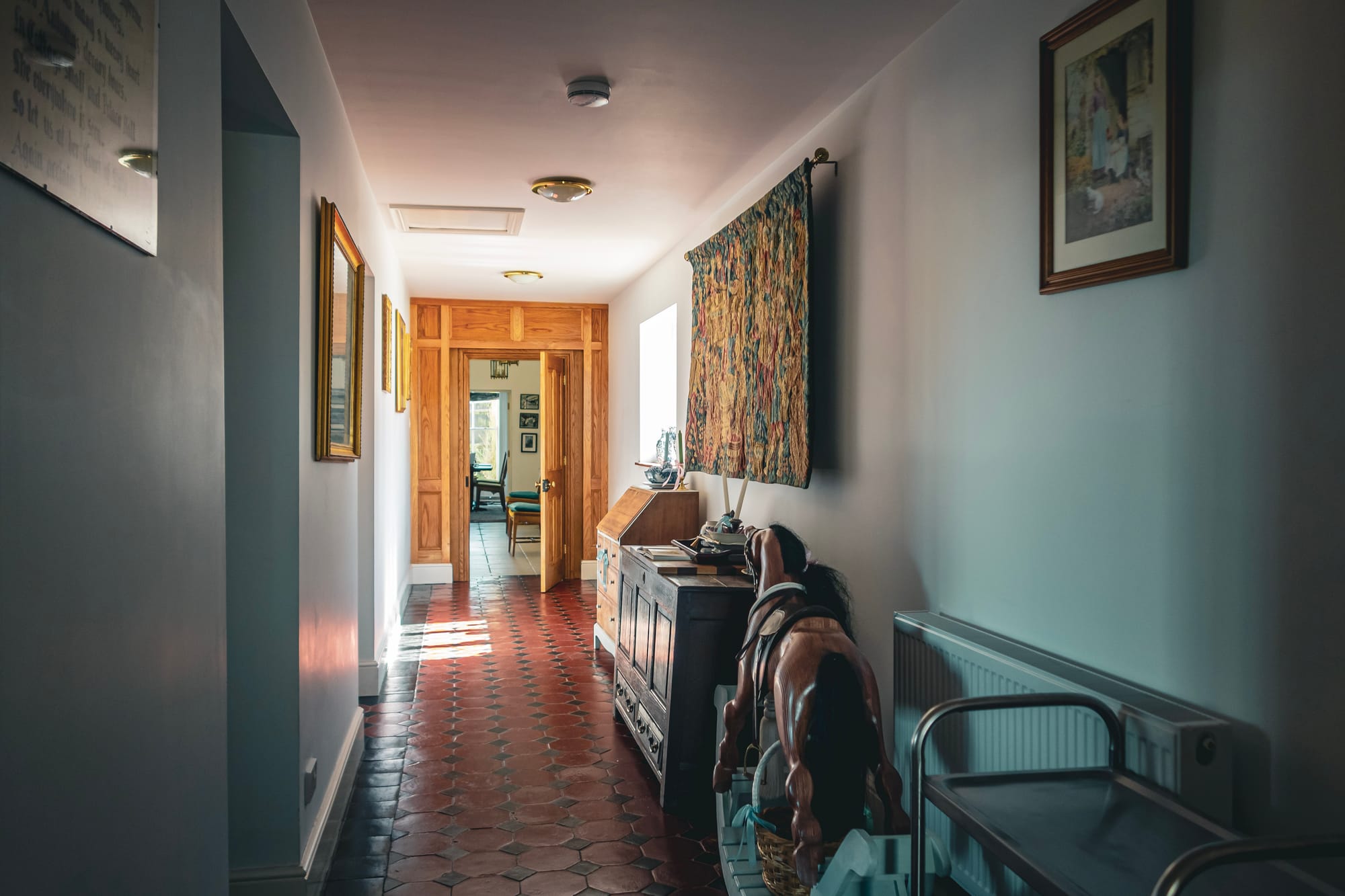
By the turn of the millennium, Eagle House was firmly part of Eccleshall’s genteel townscape, a far cry from its workhouse days. In 2000, the property was put on the market as a substantial private home with a guide price of around £450,000. One newspaper quipped that such a sum “might have wiped out local poverty 200 years ago,” a wry reminder of the house’s origins. The real estate listing from that time speaks to its “generous living space” over three storeys, including a grand 23-foot entrance hall, period fireplaces, and ample gardens. Eagle House, by the late 20th century, had become a prestigious address rather than a shelter of last resort. Its rise in status, from poorhouse to pricey residence, reflects the broader social changes in Eccleshall’s history.
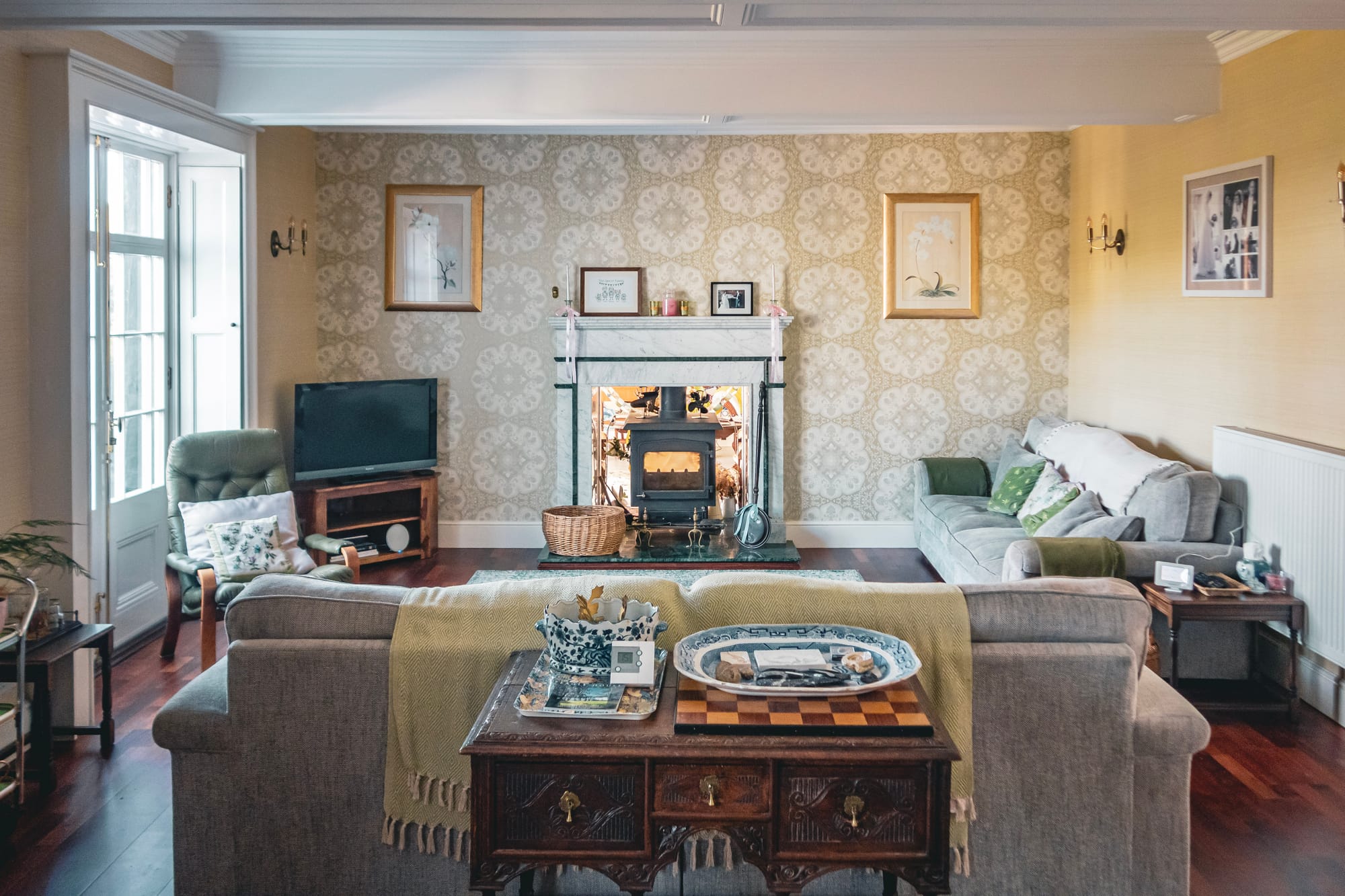
Restoration and Rebirth as a Bed & Breakfast
In the late 2010s, Eagle House entered yet another incarnation, one that beautifully blends its past with the present. The property was carefully refurbished around 2017 to convert it into a bed-and-breakfast, while retaining its historic charm. Today, Eagle House operates as an award-winning B&B, offering three elegant guest rooms and a self-catering apartment (aptly named “The Eagle’s Nest”) for visitors. The current owners, Andy and Helen, a husband-and-wife team, have not only brought hospitality and warmth to its halls but also a passion for preserving the house’s rich history.
As soon as guests step through the front door, they can sense that Eagle House is more than just a pretty Georgian home; it’s a living piece of Eccleshall’s heritage. Andy and Helen discovered that much of the workhouse story had been forgotten locally, so they undertook extensive research to reconnect with the house’s past. With help from the newly opened Staffordshire History Centre archives, they unearthed old documents like admission registers and census records. These revealed poignant details about the men, women and children who once lived here in hardship. “Through extensive research, we have been able to piece together a more detailed picture of the workhouse’s past,” says Andy, noting that they’ve learned about both the residents and the staff of long ago.
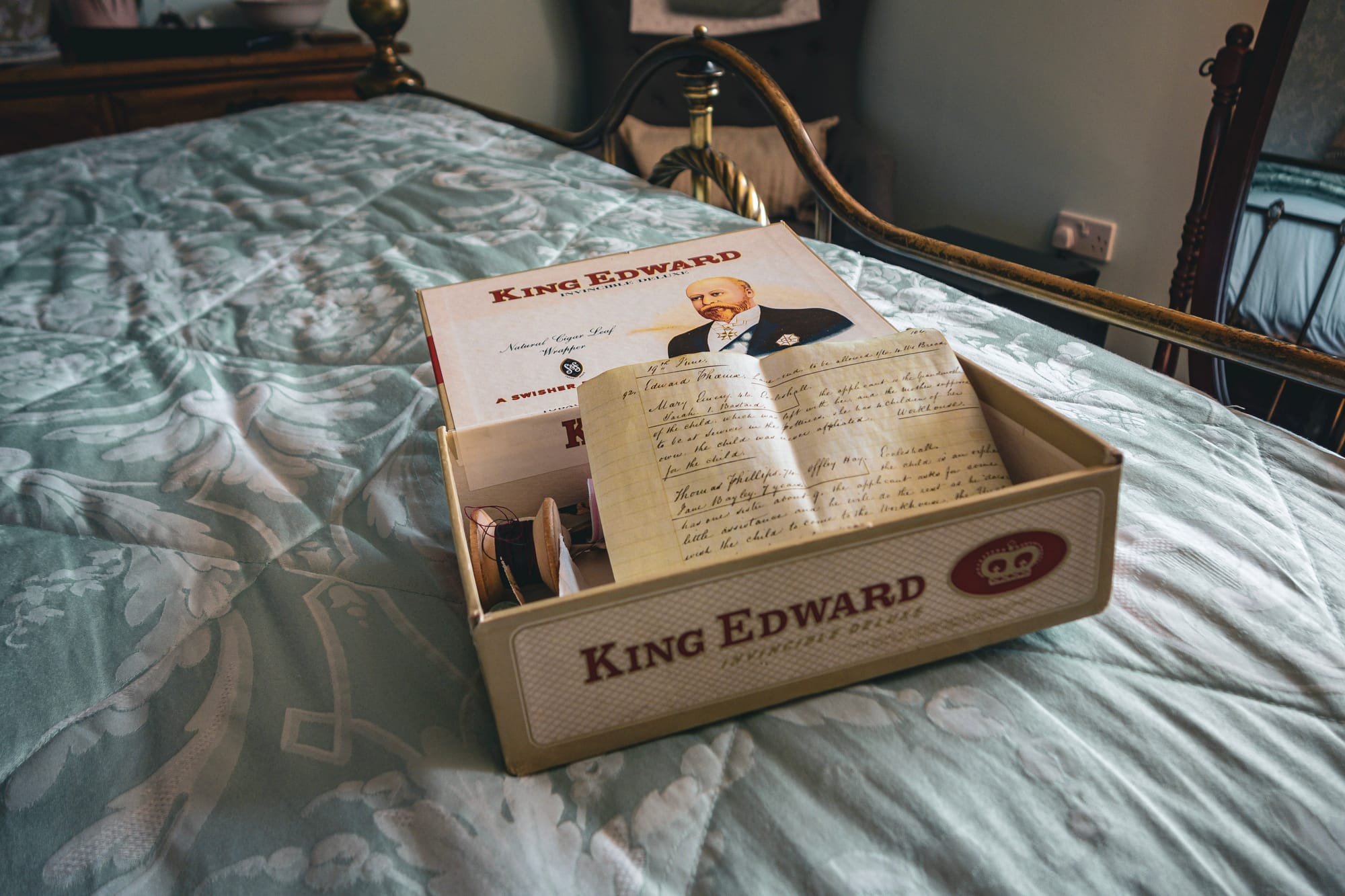
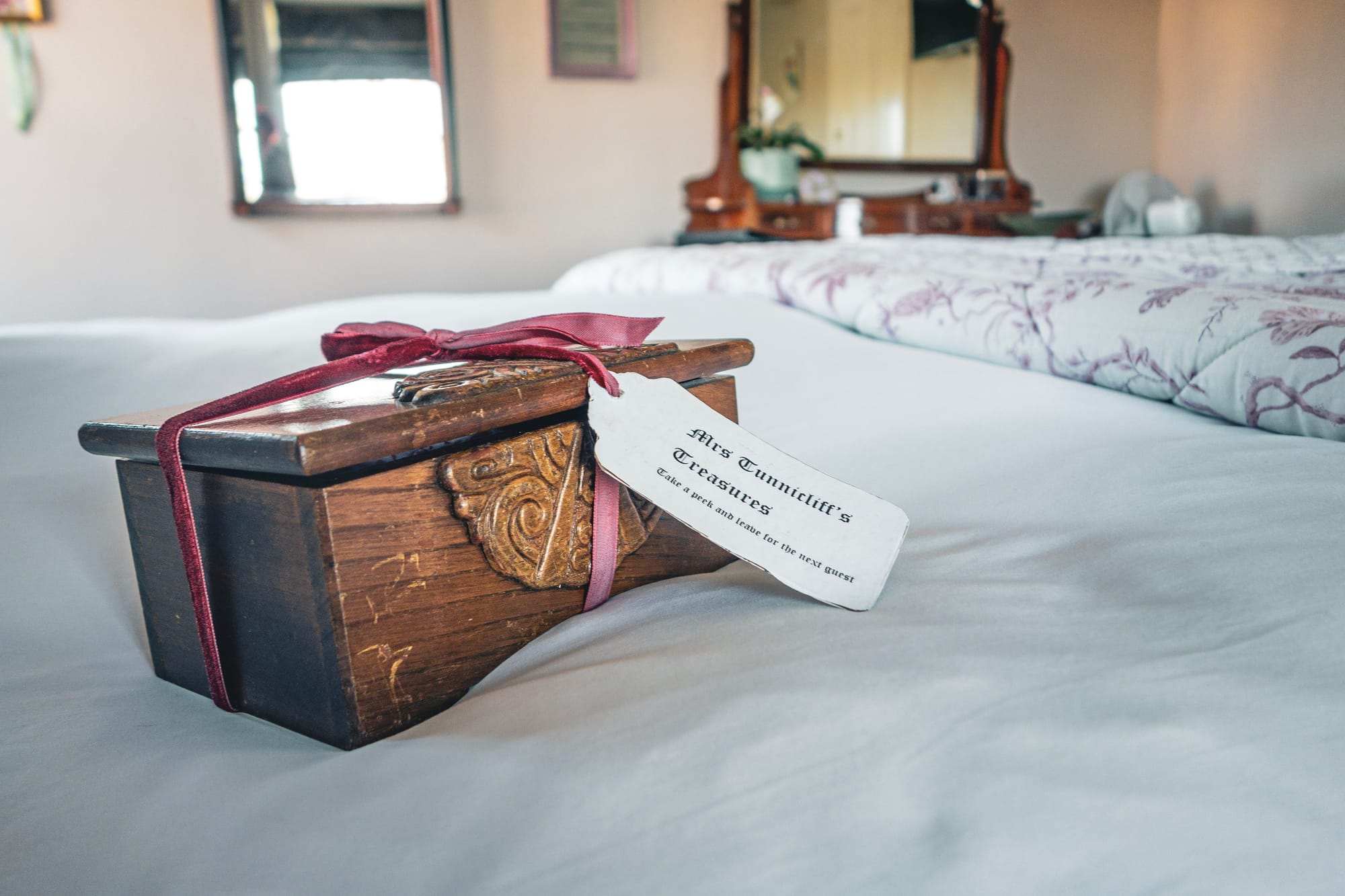
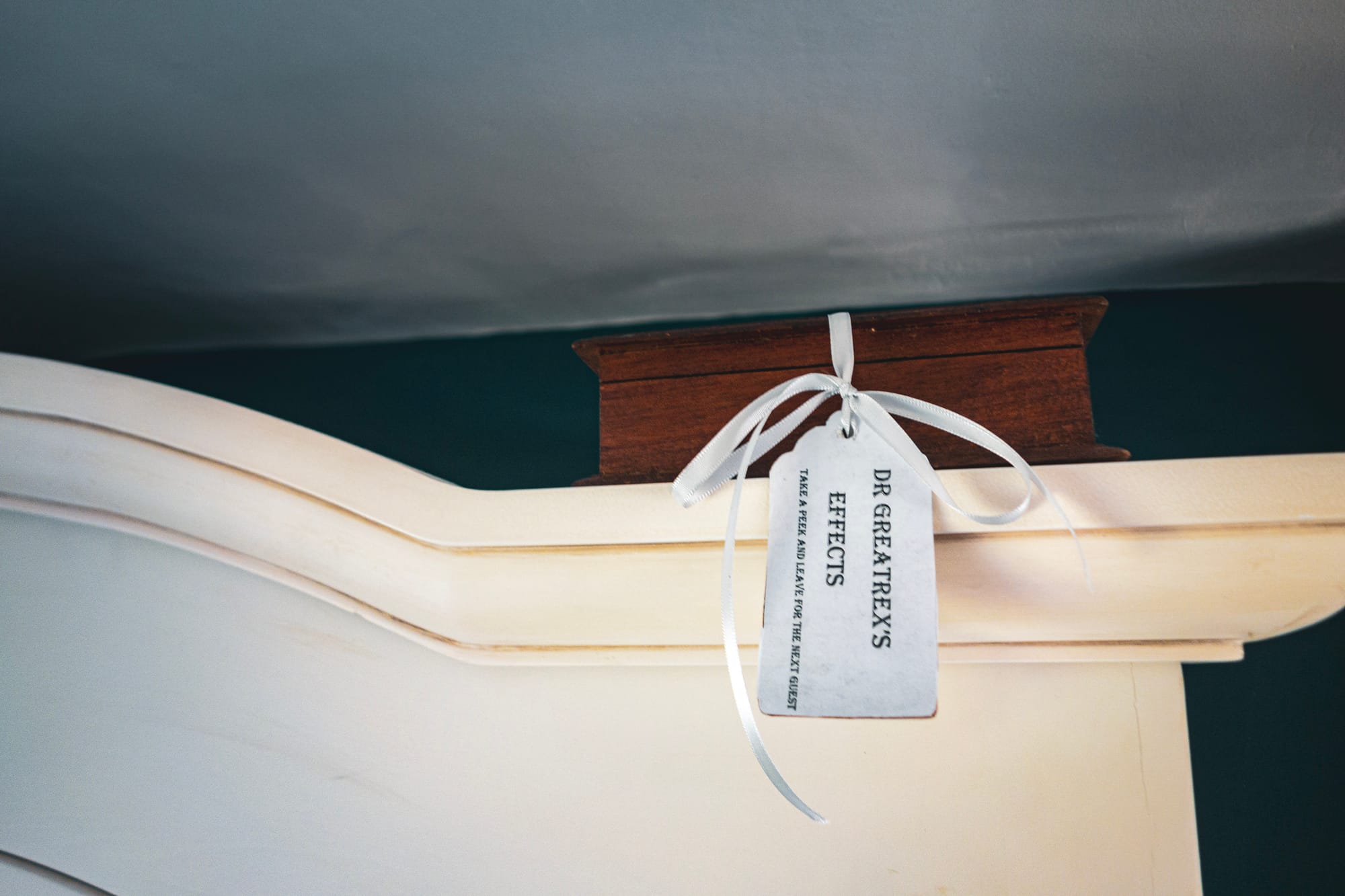
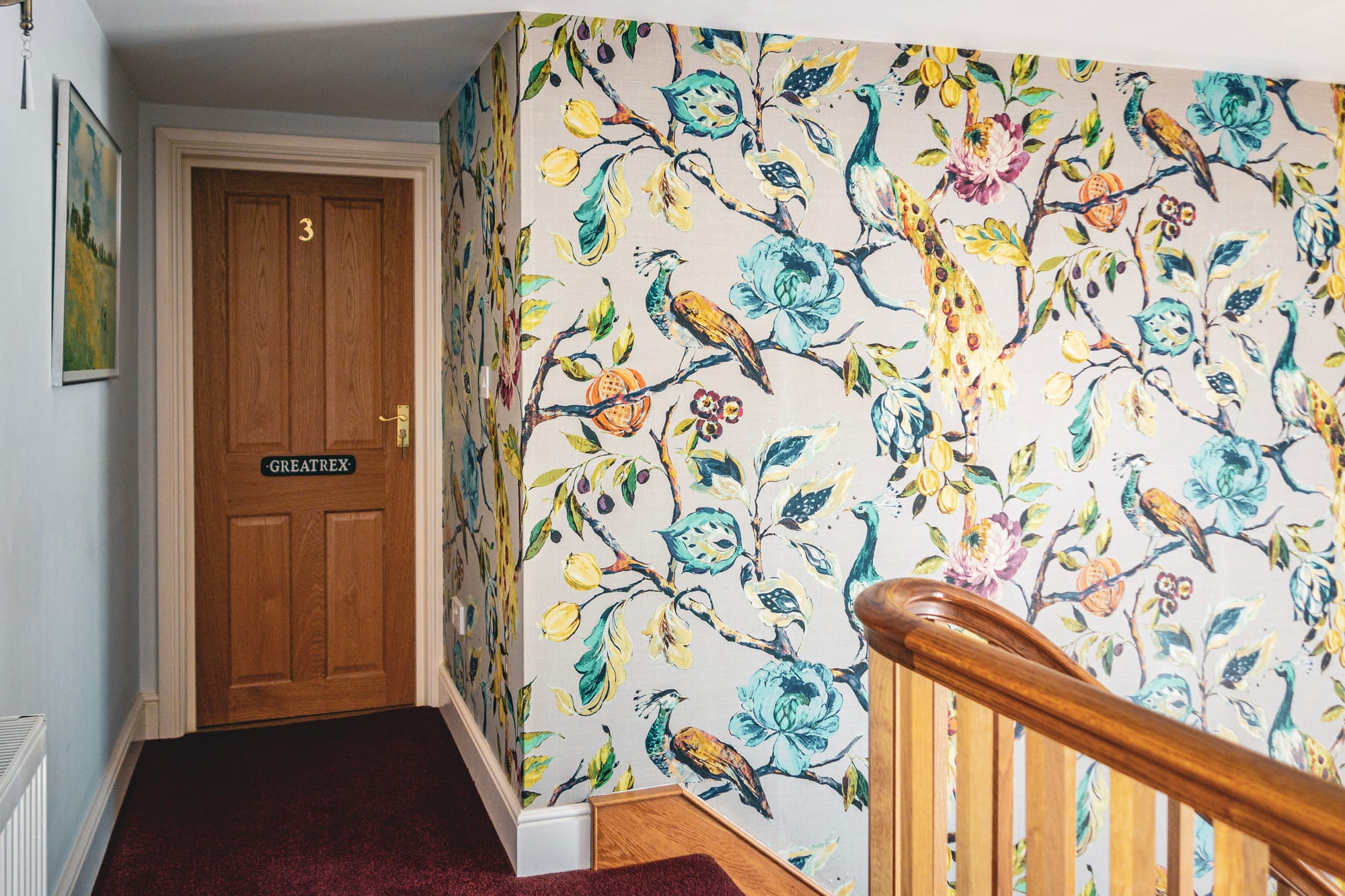
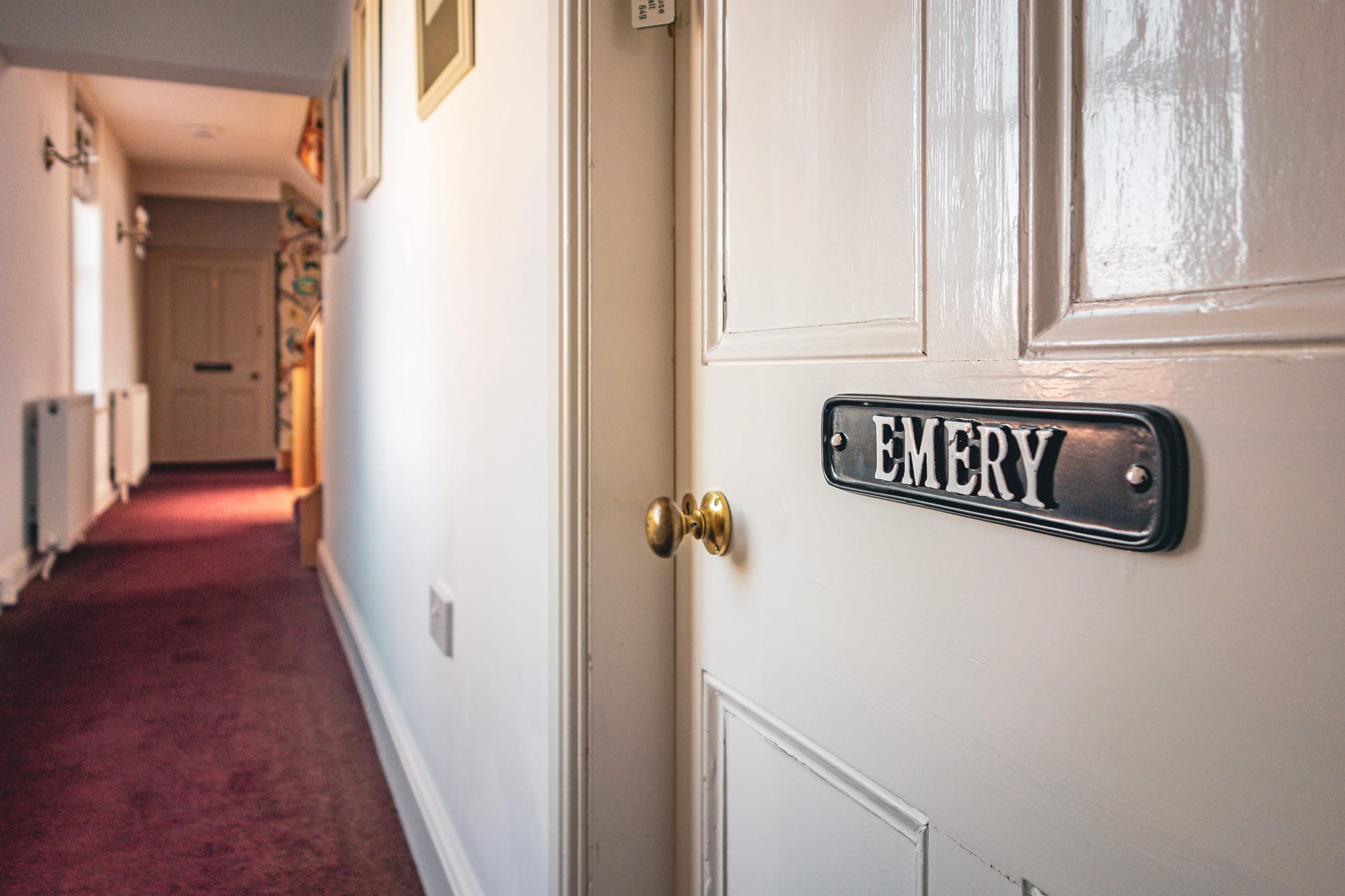
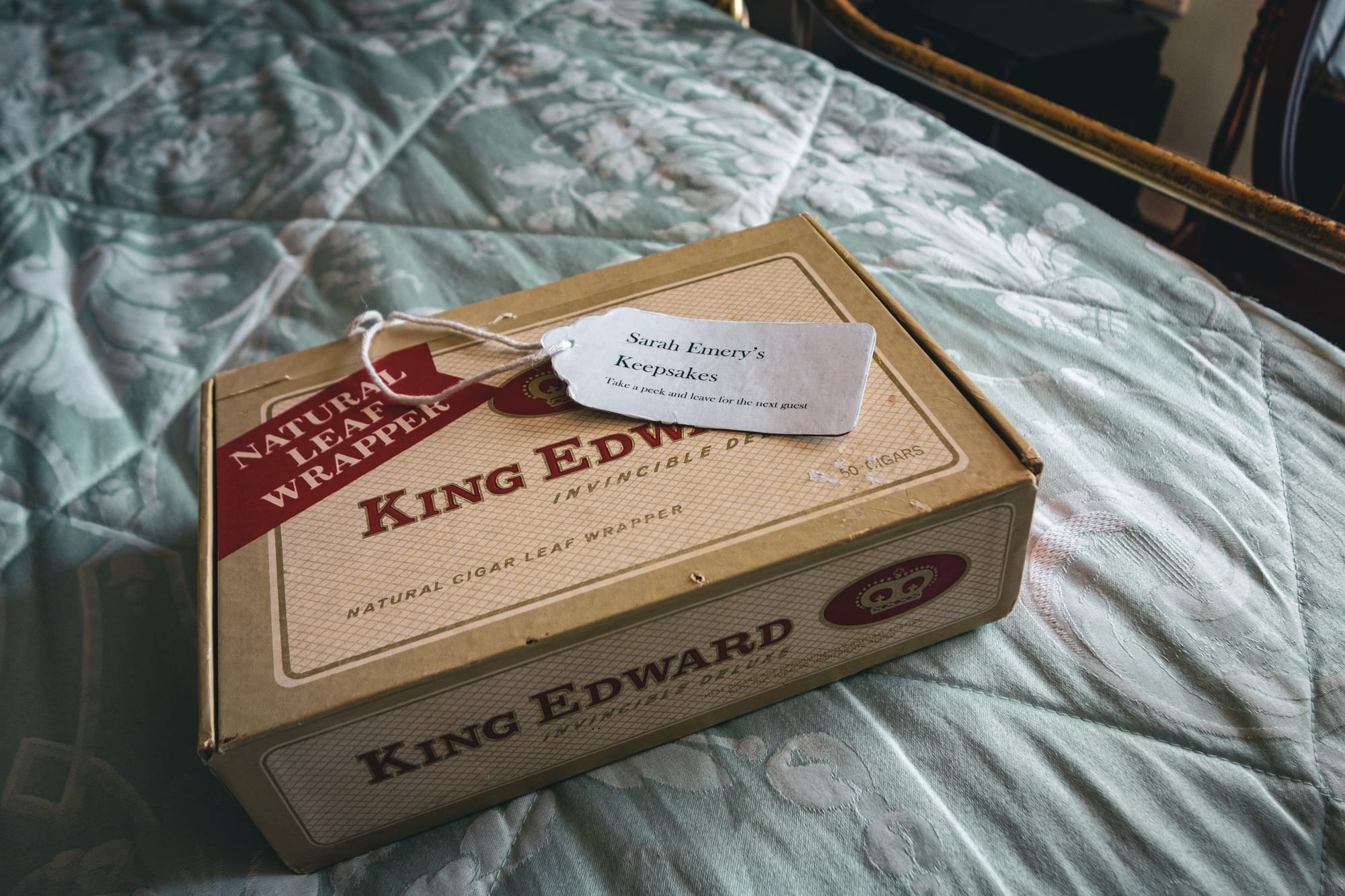
Eagle House, Eccleshall
Importantly, the owners have made a real effort to honour the memory of those earlier inhabitants. In 2024, they enhanced the guest experience by naming each bedroom after a historical figure linked to Eagle House’s story. Thus, visitors can choose to stay in the Emery Room, Greatrex Room, or Tunnicliff Room, tributes to the infant pauper Sarah Emery, the Victorian doctor Christopher Greatrex, and the headmistress Sarah Tunnicliff, respectively. Each room is decorated with a blend of period style and modern comfort, and includes a “keepsake box” with mementoes or information relating to its namesake. These thoughtful touches turn a stay at Eagle House into a mini history lesson. Guests might, for instance, read about little Sarah Emery’s fate or see copies of documents about Dr Greatrex’s family, all while sleeping in the very rooms these people once occupied in one form or another.
Andy and Helen also love to share stories in person. They often chat with their B&B guests over breakfast about Eagle House’s colourful past. Rather than shy away from the building’s workhouse chapter, they shine a light on it, describing what life would have been like in the 1830s or pointing out how the layout of the house hints at its former uses. In the front hallway, one can easily imagine paupers once lining up for daily gruel, where today a sideboard offers tea and cake. This blending of past and present is very much intentional. It’s hard to imagine what life must have been like here in those days, considering the contrast between the current cosy interiors and the stark conditions of old. By inviting guests to “step back in time” through stories and décor, the owners ensure that the legacy of the workhouse is not lost among the luxuries of a modern B&B.
The couple’s dedication to preserving Eagle House’s history extends beyond their guests, too. They are compiling their research into a book about the building’s full history, with plans to share it with the local community. They’ve also shared findings on their website’s blog and social media, and even opened their doors to host local groups (like the town chess club) as a way of integrating Eagle House into community life. In 2025, Eagle House won a Silver award for its small accommodation and had previously taken Gold as Guest House of the Year, accolades that recognise not only the quality of their hospitality but also their deep connection to local heritage. Andy and Helen demonstrate that historic preservation and modern comfort can go hand in hand. Their stewardship has turned Eagle House into a kind of living museum, one where you can sleep in a plush bed, yet still feel the echoes of footsteps from 200 years ago in the very same halls.
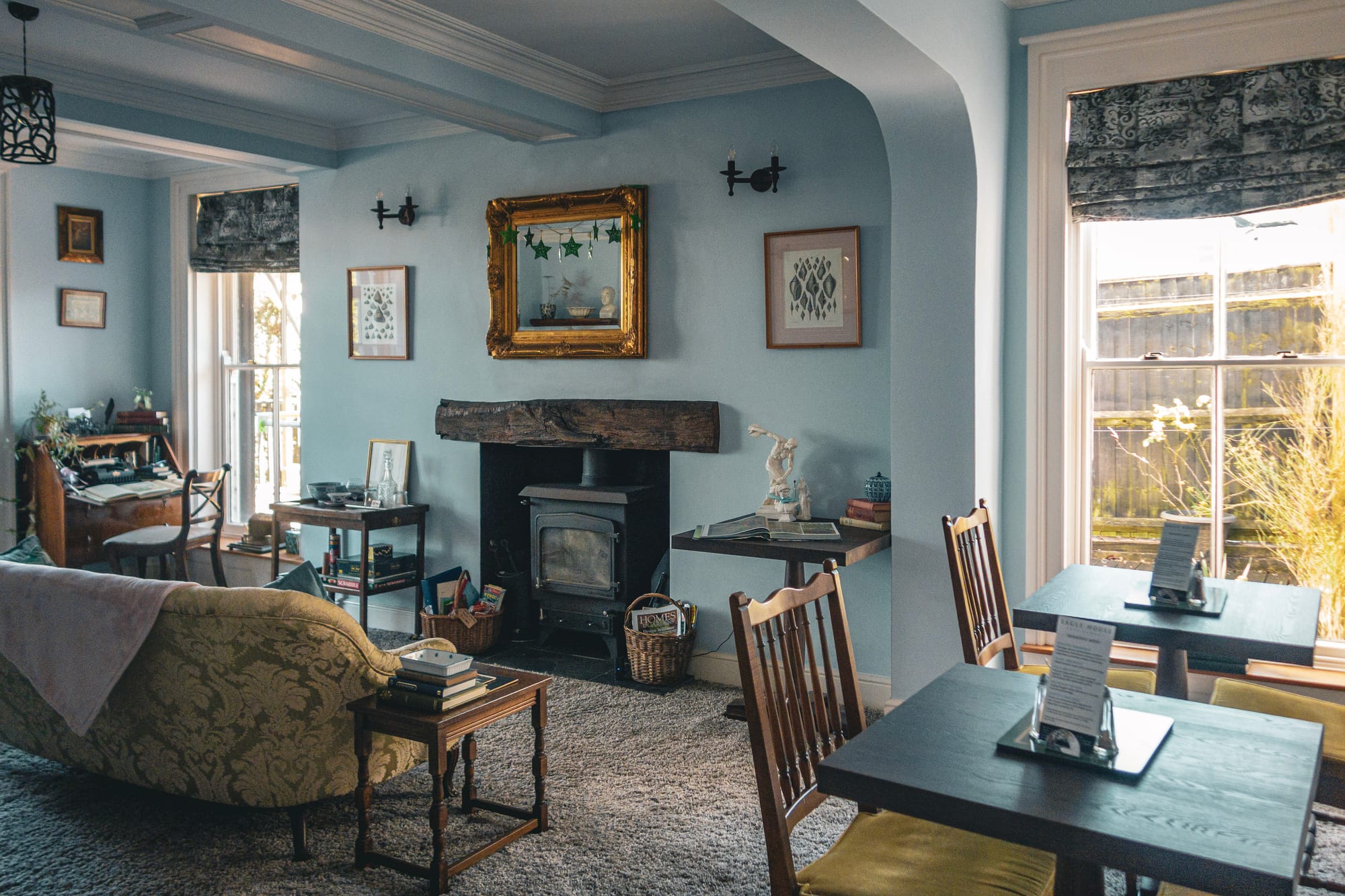
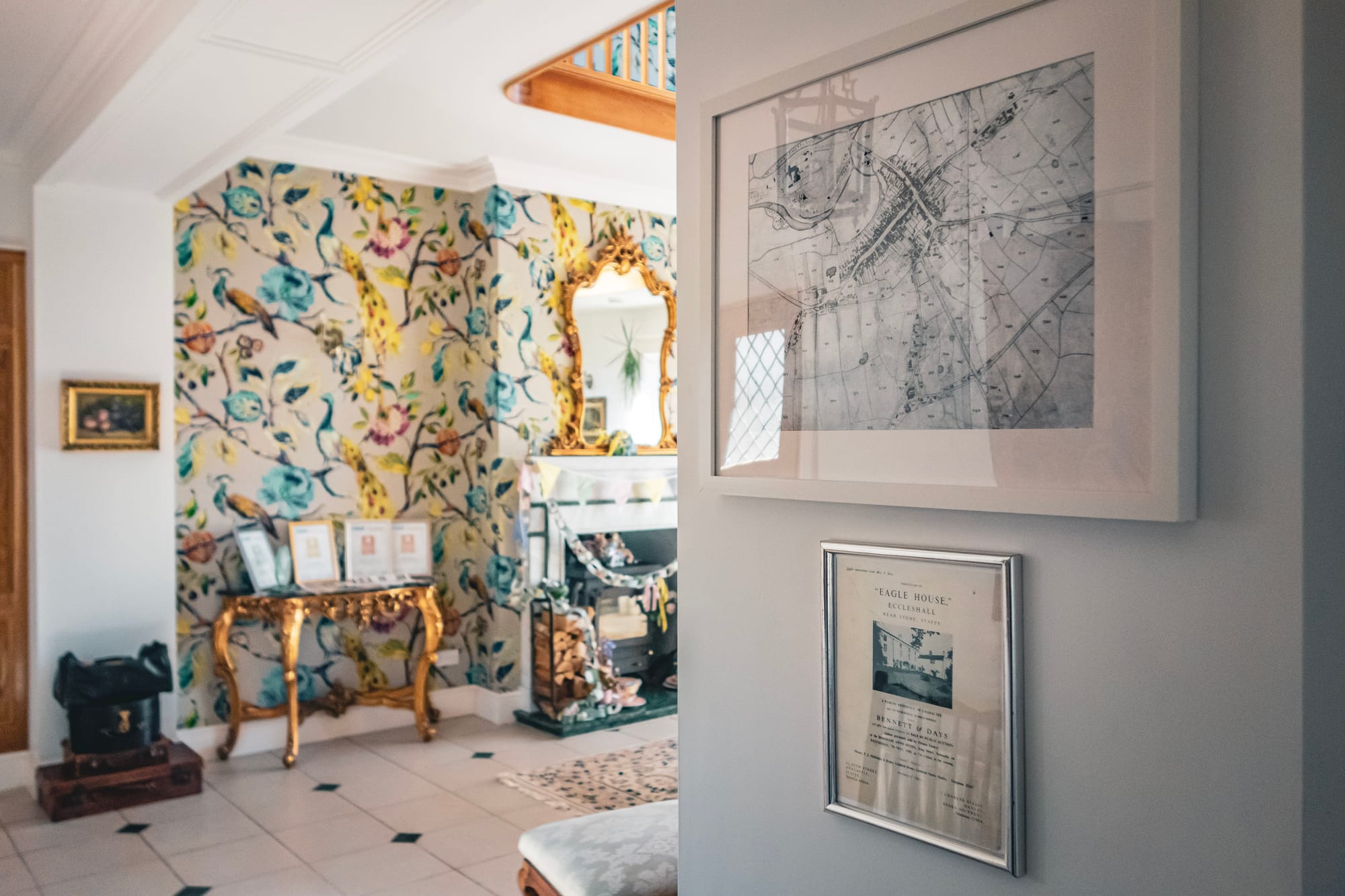
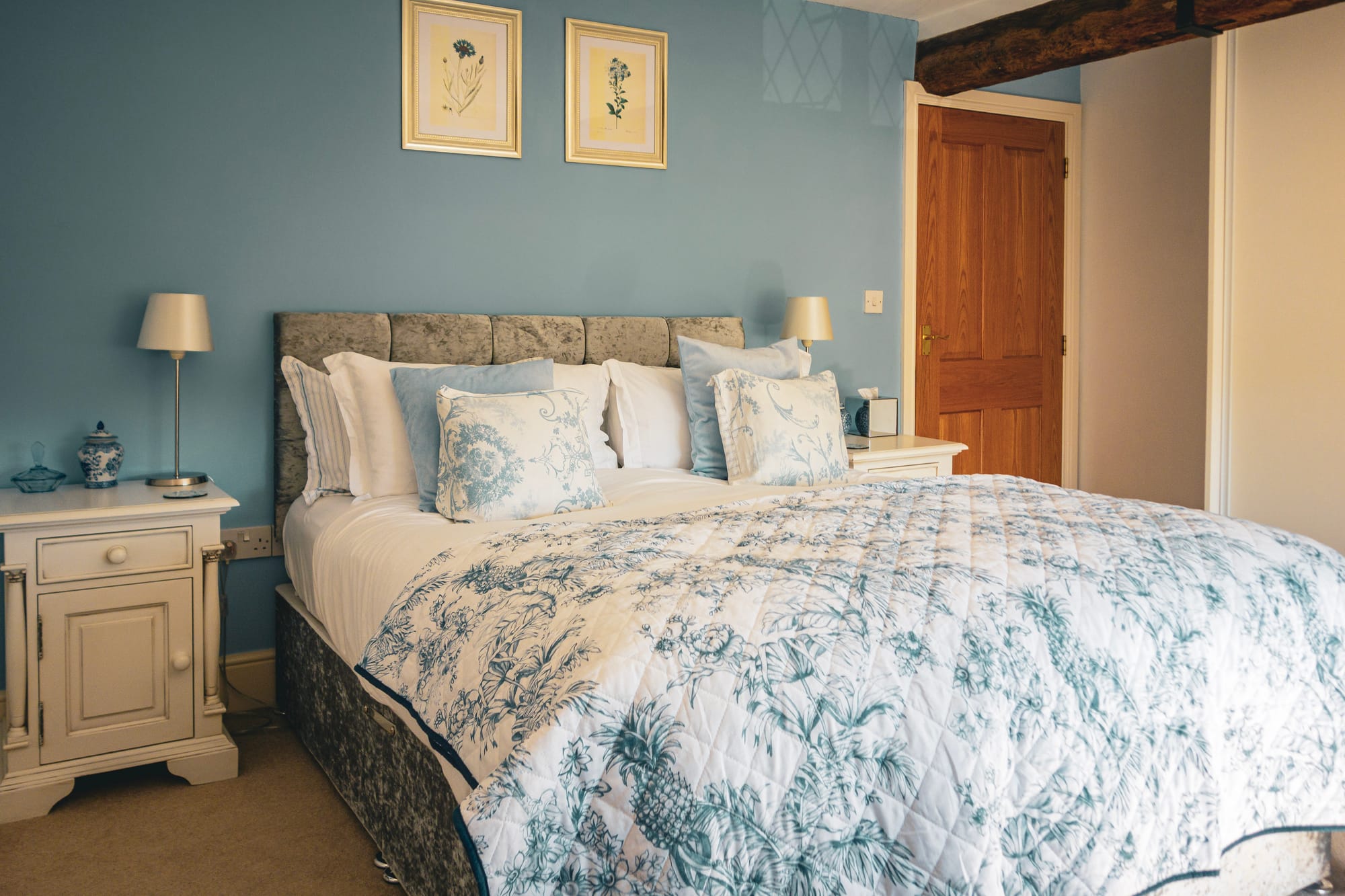
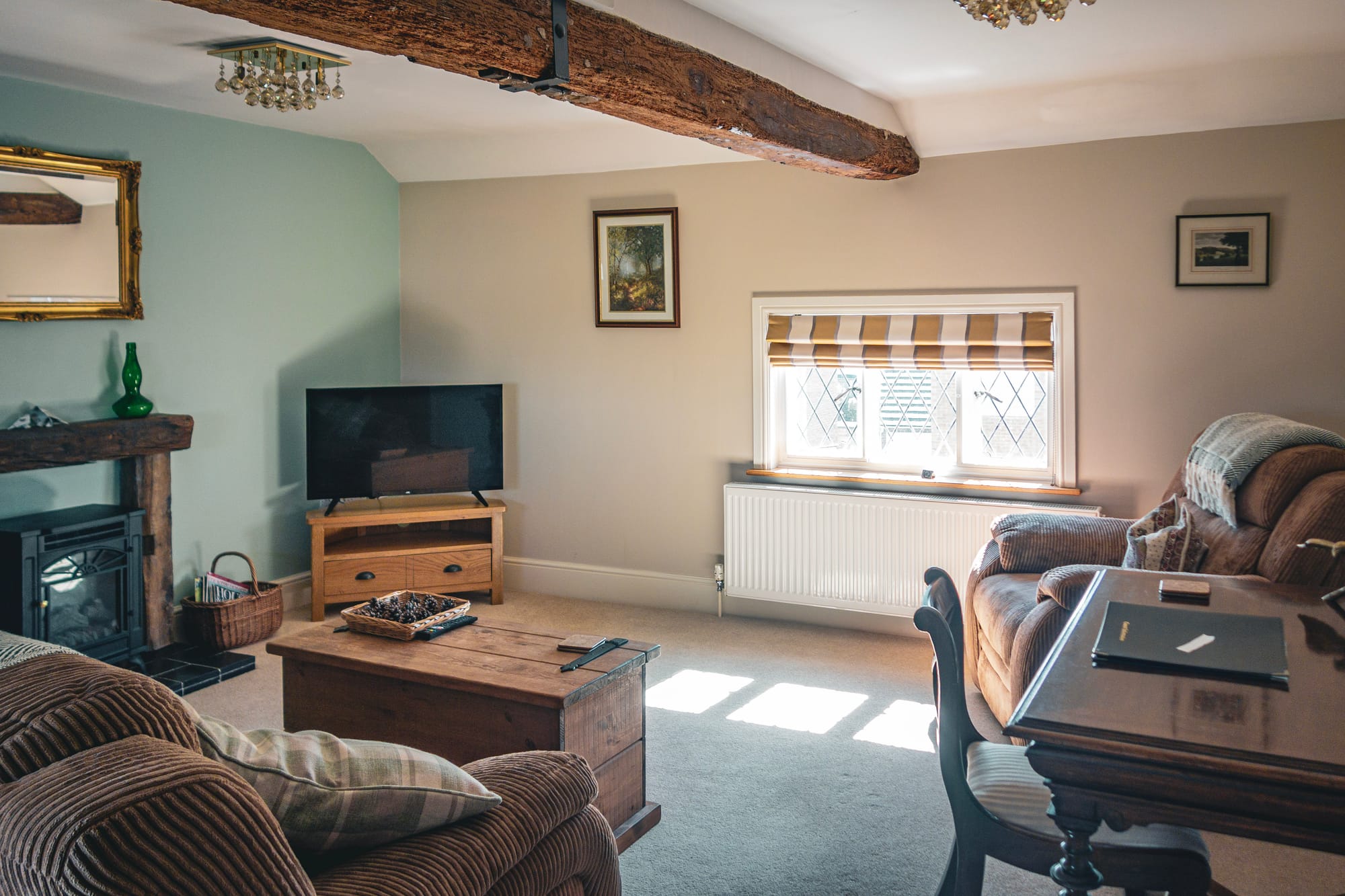
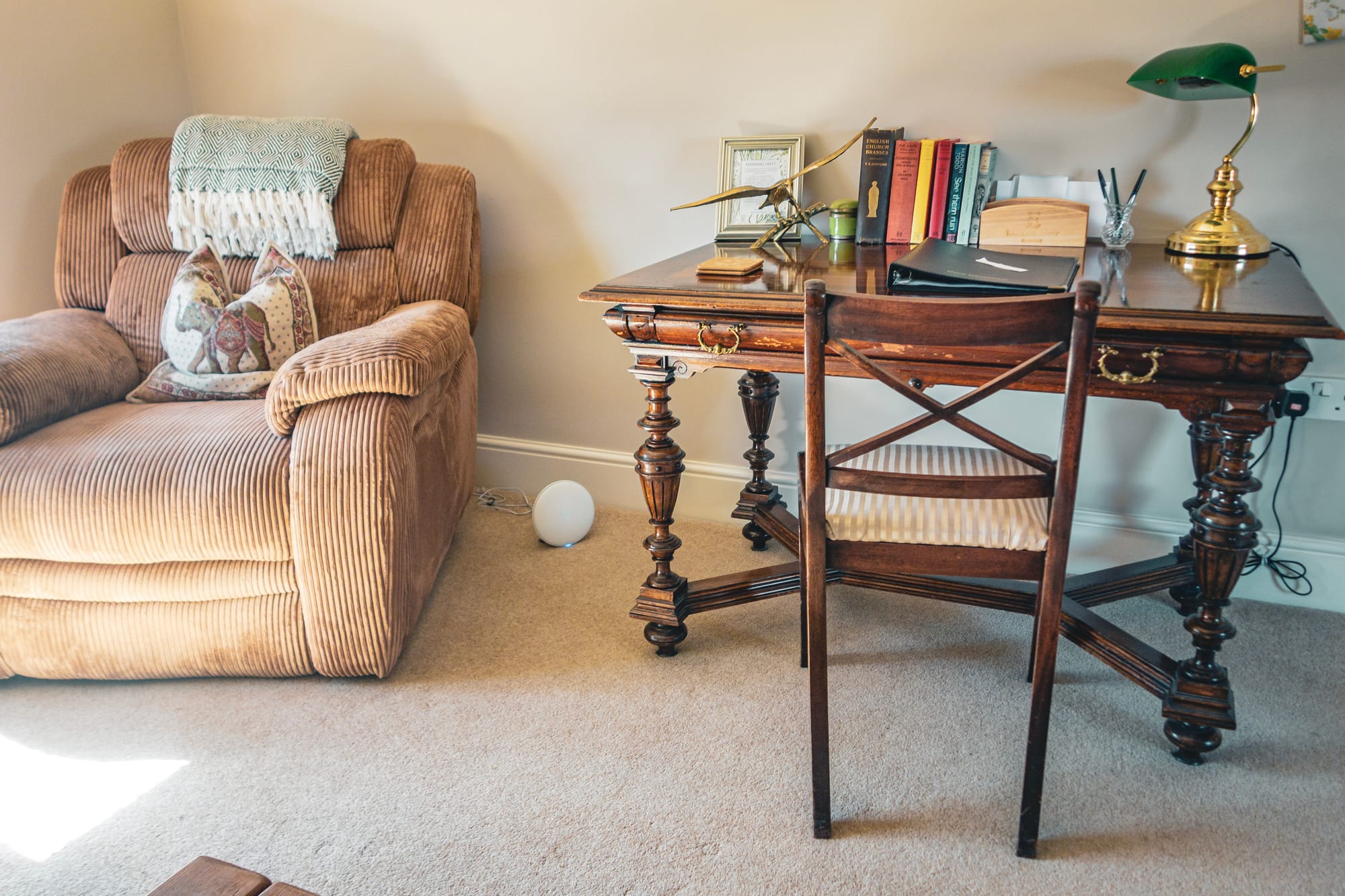
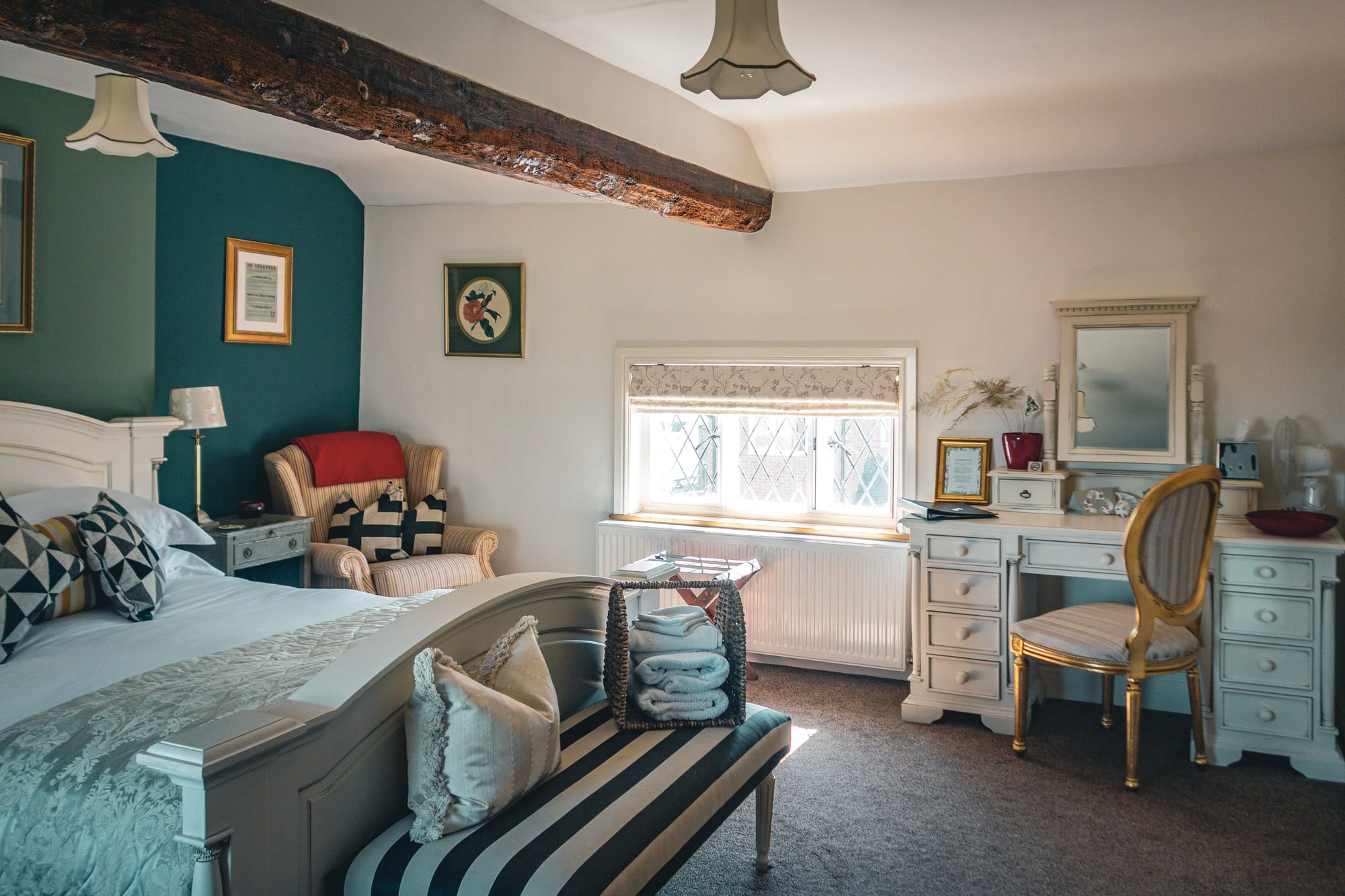
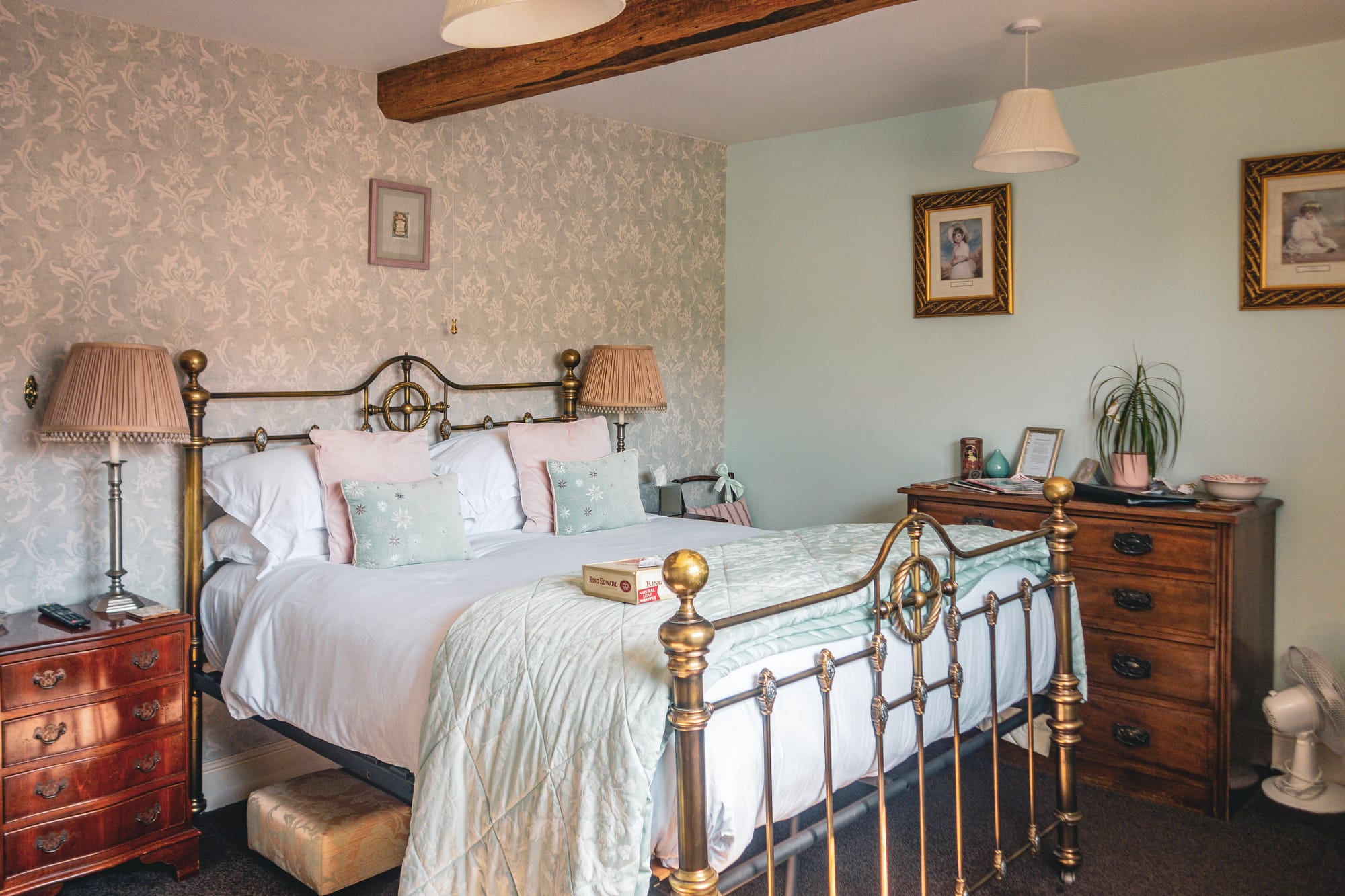
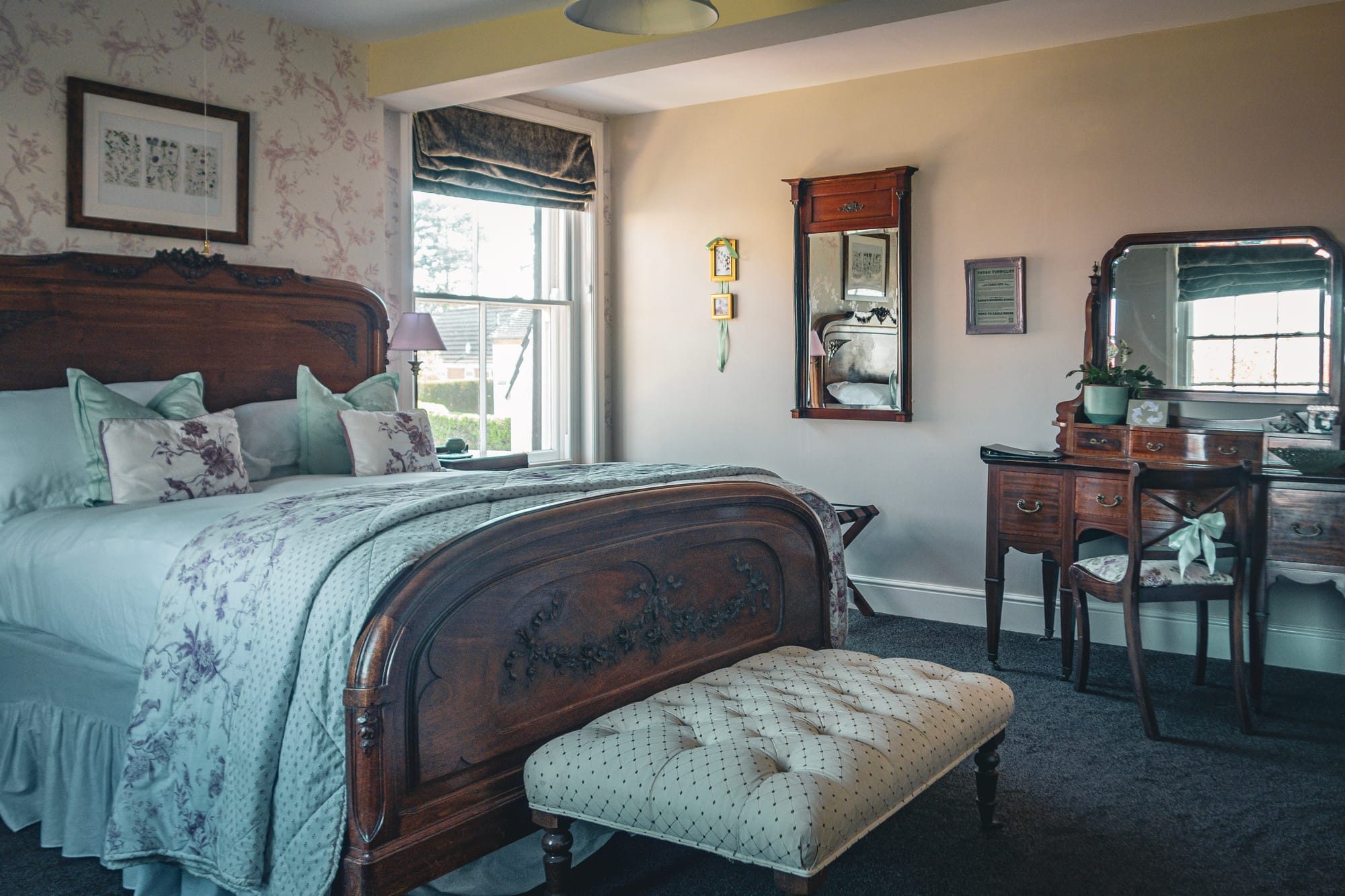
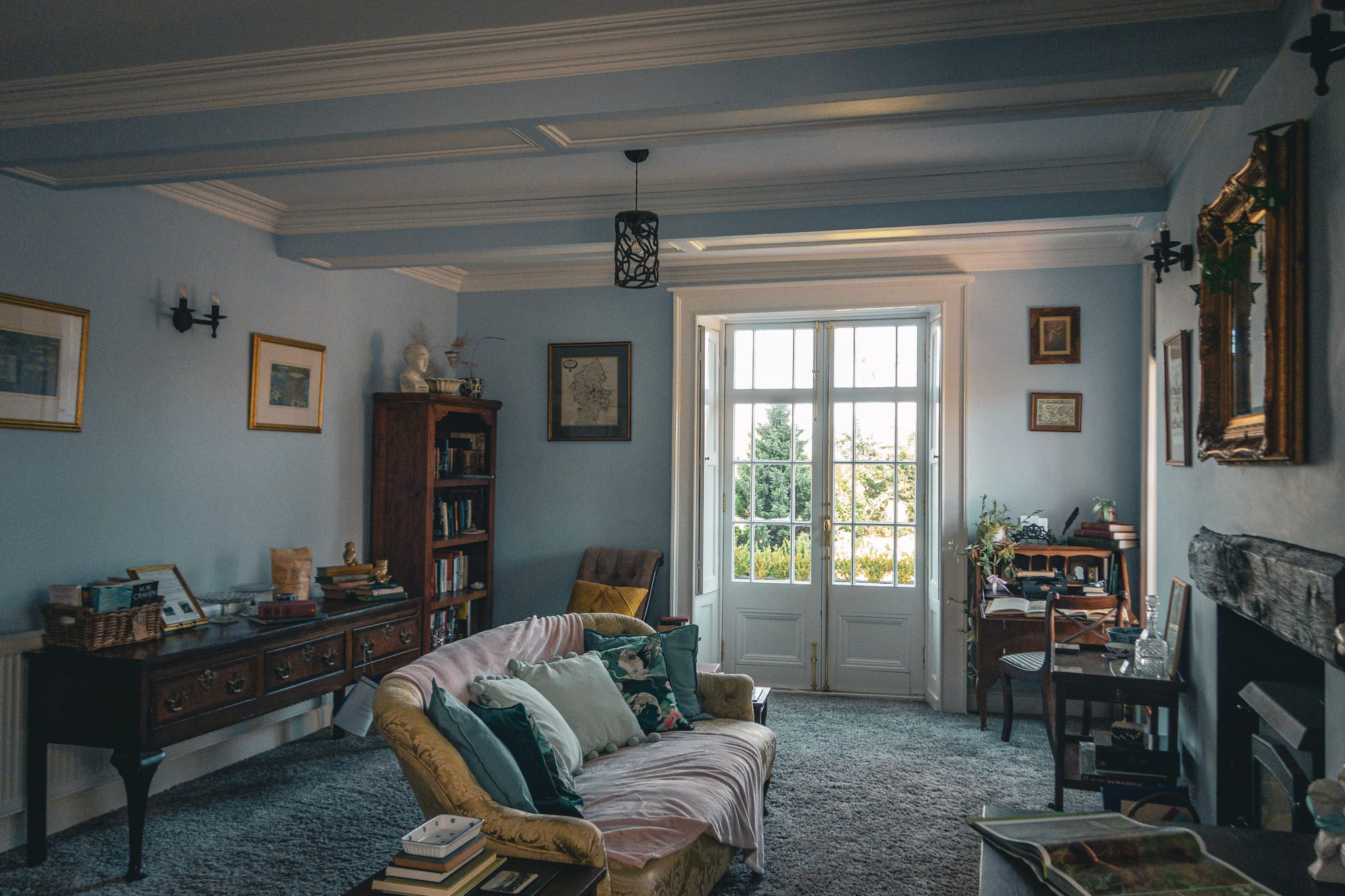
Eagle House, Eccleshall
Keeping the Legacy Alive
Over more than two centuries, Eagle House has reinvented itself time and again, from a Georgian poorhouse to a Victorian doctor’s home, then a ladies’ school, a private dwelling, and now an award-winning B&B. Throughout these changes, the building has been a silent witness to the ebbs and flows of Eccleshall’s social history. Thanks to the current owners’ efforts, that history is now vividly told rather than forgotten. Memorials and displays at Eagle House today are subtle but heartfelt: a guest room named Emery quietly honours a forsaken child; a framed document in the lounge might recall Dr Greatrex’s time; perhaps a photograph or two show the house’s evolution. Storytelling is woven into the fabric of a stay here, a truly unique way of preserving the past.
As a result, visitors who come for a comfortable night’s rest depart with a deeper appreciation of Eagle House’s journey and the lives it has sheltered. From the bleak days when it sheltered the poorest of the poor to its present role as a warm and welcoming home-from-home, Eagle House stands as a testament to resilience and renewal. Its walls tell a story of Eccleshall itself, a story that Andy and Helen, the present-day caretakers, are lovingly keeping alive for future generations. The next time you visit this charming Staffordshire market town, you might book a room at Eagle House and sleep under a roof that has seen hardship, hope, learning, and love in equal measure, truly experiencing history where it happened.
